
South Australian Medical Heritage Society Inc
Website for the Virtual Museum
Home
Coming meetings
Past meetings
About the Society
Main Galleries
Medicine
Surgery
Anaesthesia
X-rays
Hospitals,other organisations
Individuals of note
Small Galleries
Ethnic medicine
- Aboriginal
- Chinese
- Mediterran
John Charles Goodchild
and the role of stretcher bearers
WW1 stretcher bearer, signwriter, artist & teacher
Acknowledgment: We are grateful to Judith Brooks, his daughter, for the information and permission to photograph selected drawings by Charles Goodchild while he was in France with the Australian Medical Corps during World War 1.We also thank Colonel Swen Kuusk and Professor Annette Summers AO, RFD, for the military input.
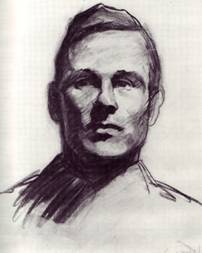
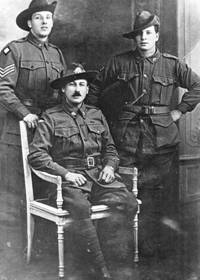
Left: Charcoal drawing of John Goodchild by his wife Doreen 1926.
Right: Photograph of the Goodchild men in France . Father Jack sitting, brother William (left), and John Goodchild (right).
John Charles Goodchild was born in Southwark, London in March 1889, the fourth of nine children. His early education was at the Strand School a part of King’s College where he held a scholarship and received a medal in rifle shooting. In 1913 his family migrated to Adelaide and John joined the work force. He started as a plumber, then a grocer and later as a sign-writer. He found the work repetitious and after painting BUSHELL’S TEA advertisement numerous times he looked for a change.
At this time the First World War continued and he enlisted in the Royal Australian Medical Corps in January 1917. His early training was at the 7th Australian Army General Hospital, now Keswick. Here he was exposed to the usual army drilling on the parade ground and weapon handling. His first aid elements involved stretcher drill, first aid, the application of dressings, splints and pain relief.
His artistic talent was soon recognised and he was asked to create posters warning of the danger of venereal disease. These were similar to the warnings now displayed on cigarette packets.
On the 8 August 1917 he sailed from Sydney to England . His rank was private in the Army Medical Corps. The ship was the Anchises (A68). The army records his age as 18, religion C/E, date of joining 3.1.1917. and rate of pay 5 shillings a day.
In England he had further training on Salisbury Plain and was then transferred to Rouelles near Le-Havre. The work of the stretcher bearers at the front was dangerous. The first aid posts were within a few hundred yards from the lines and because of the constant shelling the transfer to the hospitals some miles away was usually done at night to prevent losses of motorised ambulances. Horse buggies were used during the day for critical cases. Retrievals from no-mans land were hazardous. Goodchild’s artistic expertise was again noted and he provided sketches for the DIGGER and later he was commissioned to provide drawings of burial sites in France : “ Where Australians rest” The following are some of his sketches from Keswick and while in France observing the horrors of war. The reaction to dread is too often expressed as a comic relief.

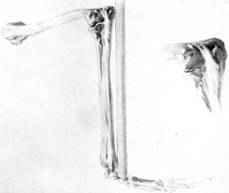
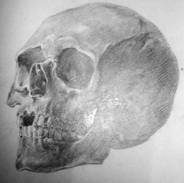
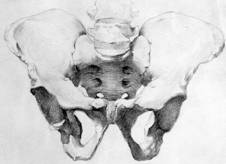
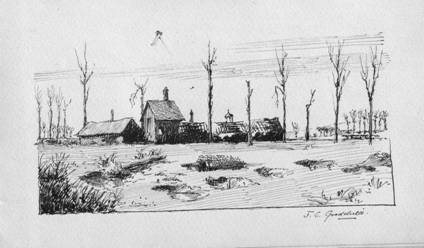
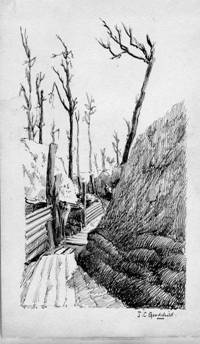
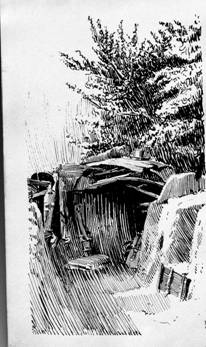
John Goodchild's drawings from the front:
Left: Shell craters, the trenches
Right: Regimental Aid Post at the front.
Below:: John Goodchild's rank & time at the Villers Bretoneux front.
![]()
J C Goodchild's postcards were drawn in France and sold to soldiers in sets of 6 to post home
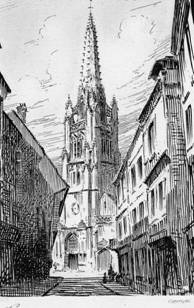
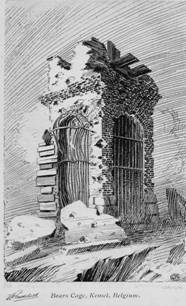 Left: Church at Harfleur
Left: Church at Harfleur
Right: Bears Cage Kemel Belgium
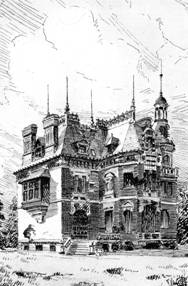
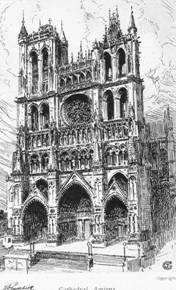 Left: Mayor’s House at Villers Bretoneux
Left: Mayor’s House at Villers Bretoneux
Right: Cathedral, Amiens
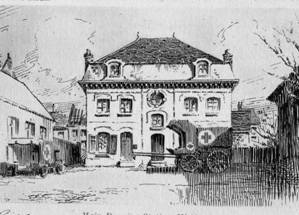 Army Hospital
Army Hospital
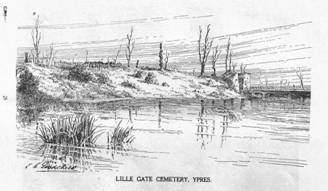
After the war John Goodchild was asked to draw sites of the numerous war cemeteries in Europe and elsewhere. His drawings were published in 1920 by the Government Printers in Melbourne and titled “Where Australians Rest” The two examples following are in France . Others were drawn at Gallipoli, Lemnos and England .
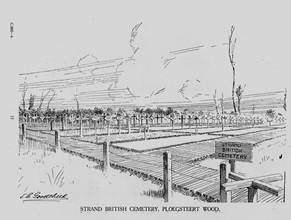
.
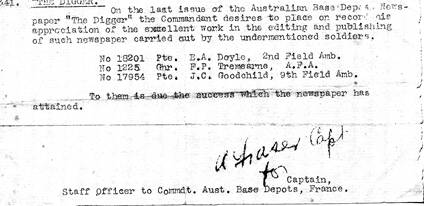
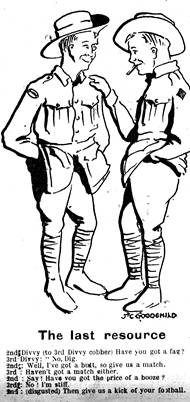
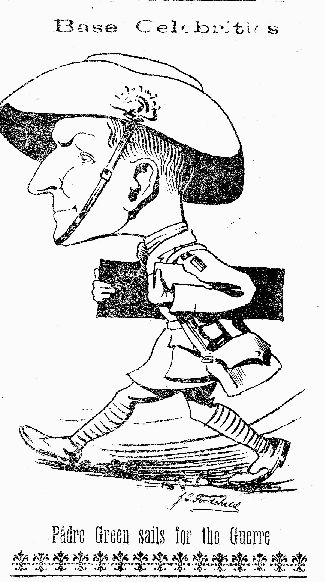 Padre Green
Padre Green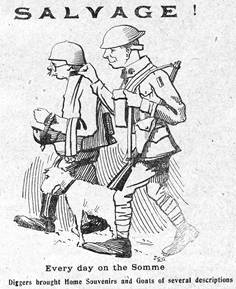
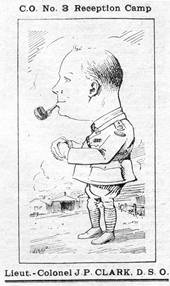
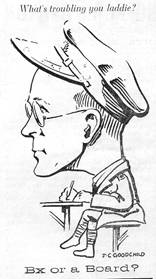
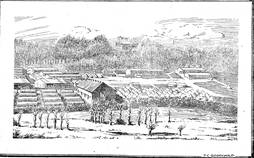
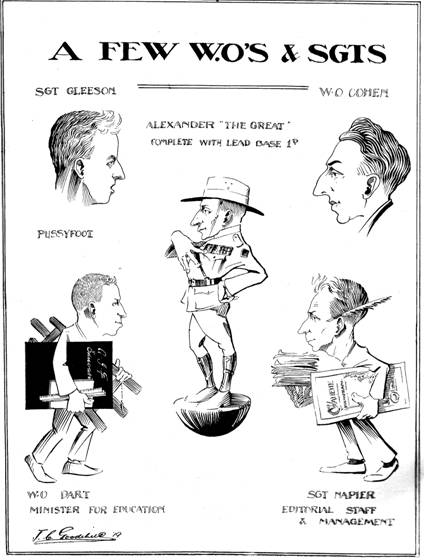
After the war he came back to Australia , attended the South Australian School of Arts and returned to London for further study at the Central School of Arts and Crafts. He returned to Adelaide and taught etching at the SA School of Arts and became famous for his sketches of Adelaide and Australian country, Goodchild also had a commercial side. He produced yearly calendars for South Australian firms such as Fauldings, Elders and others. He had his own press and his other works were printed in his studio. Later in the 1940s he drew political cartoons for the News. During WW2 he was an official war artist. He was a board member of the SA Gallery and Principal of the School of Arts and Crafts .
There are numerous references about him on the “web” but his life story is most feelingly recorded in “Goodchild 1898-1980 his life and art”: (ISBN 0 95924 13 0 2) His wife Doreen provided the information, his daughter Judith Brooks wrote the text.
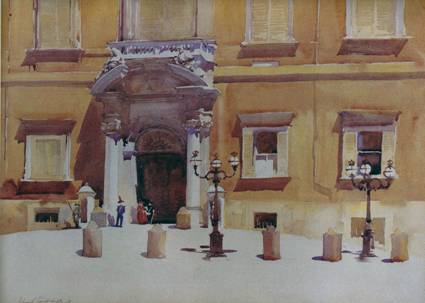
Goodchild’s watercolour of the gateway of the Quirinal Palace in Paris . Now in the Art Gallery of South Australia
Addendum: The role of stretcher bearers
Acknowledgment:
We are grateful to David and Maxine Ennis for the following information and the loan of the book “Royal Army Medical Corps Training 1911” (RAMC) from which the following diagrams, photographs and table of training have been reproduced.
The number and severity of war injuries will differ and depend on the nature, severity and duration of the conflict. Ready availability of First Aid is of vital importance and the lack of it can have serious effect on troop morale.
It is well known that if a member of an advancing army is injured during combat the other soldiers must proceed and not render help. The application of First Aid is the duty of the stretcher bearers.
The stretcher bearers during the First and Second World Wars were usually recruited from military bands and other volunteers as determined by the recruiting or army officers. More recently (in National Service) some members were conscientious objectors. Their responsibility was to administer first aid and transfer the injured to the Regimental Aid Post (RAP). It was customary to have four bearers attached to a company and the RAP site was close to the combat zone, sometimes in the reserve trenches. The Commander or the Company doctor chose the site protected from enemy fire. In France where injuries were numerous some injured had to wait before retrieval.
The bearers administered first aid, applied dressings, pain relief and splints. They then decided whether the injured could walk or be carried or required a stretcher. The aim was to arrive at the RAP as soon as possible. The responsibility of the Stretcher Bearers stopped here. Any further transport and treatment was taken over by the Field Ambulance.
The Field Ambulances conveyed the injured to the Regimental Dressing Station or similar post further away. This was a triage station. The lightly injured were accommodated, fed and treated here. Severe injuries were transferred to an army hospital similar to the now well known TV series “MASH” which illustrated modern air evacuation.
The training as described in the RAMC training manual involved the usual parade exercises. There were lectures on anatomy and the prevention of diseases. The first aid training was extensive. It involved first aid gear checking, stretcher drill, tent erection and water safety. Additional attention was centred on food hygiene and food preparation.
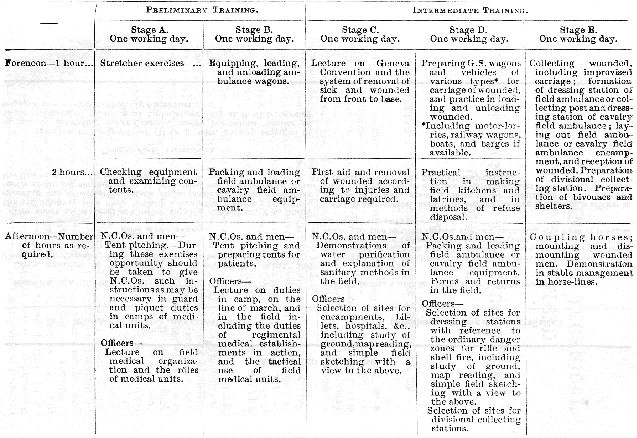
A page from the Training Manual detailing stretcher bearer training
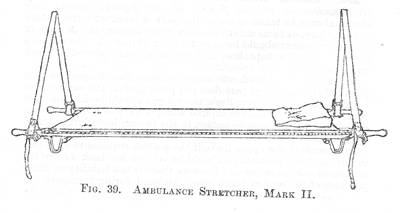
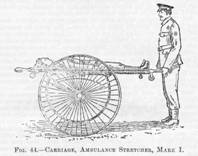
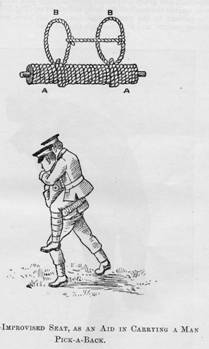
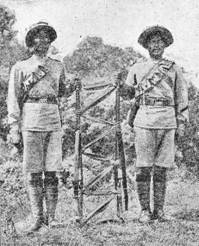
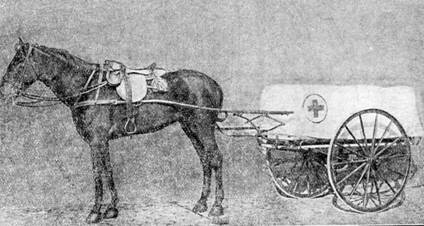
Avery’s “rapid transit horse drawn ambulance wagon”.
-o0o-